Fun and Strange Oregon Coast Facts: When More Sand Can Mean Less
Published 05/09/2012
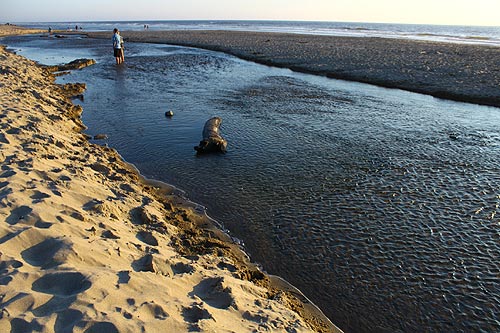
(Oregon Coast) – The interesting thing about the beaches of the Oregon coast is that they never look the same from day to day. In fact, they can change fairly drastically in a matter of hours, depending on what the tide is doing. To call this a dynamic environment would be an understatement (Above: The D River in Lincoln City was changed by big sands).
One of the more fascinating ways things can change is through sand levels. During the winter, they typically go down, sometimes way down, as winter storms scour sand and the levels drop. Then, incredible things are sometimes revealed. Weird structures hidden beneath the sand show up, like 2,000-year-old tree stumps, or even older. Or wild treasures, like nearly 200-year-old cannon, an old mail truck from around the '30s, parts of a 100-year-old shipwreck, and more.
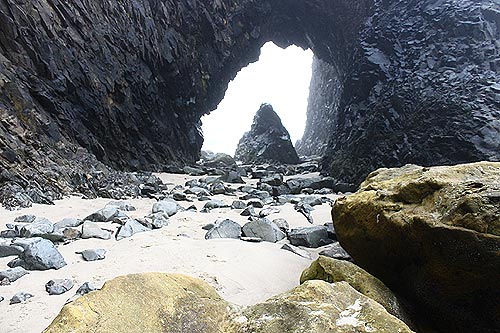
Arch Cape
Includes exclusive listings; some specials in winter
In Cannon Beach:
Includes rentals not listed anywhere else
In Manzanita, Wheeler, Rockaway Beach:
Some specials for winter
In Pacific City, Oceanside:
Some specials for winter
In Lincoln City:
Some specials for winter
In Depoe Bay, Gleneden Beach:
Some specials for winter
In Newport:
Look for some specials
In Waldport
Some specials for winter
In Yachats, Florence
Some specials for winter
During the summer, however, sand levels go up, as calmer conditions typically bring more sand in. Like the summer 2011, which wound up among the most remarkable on record, where sand levels got so high that it created a barrier to the tide – and suddenly much of the Oregon coast looked like one big extreme low tide event.
It was a classic example of when more brings less – in this case more sand meant lesser tide intrusion.
The landscape was changed in all sorts of funky ways. Like in Lincoln City, really high sand levels altered the route of the D River on its way out to sea.
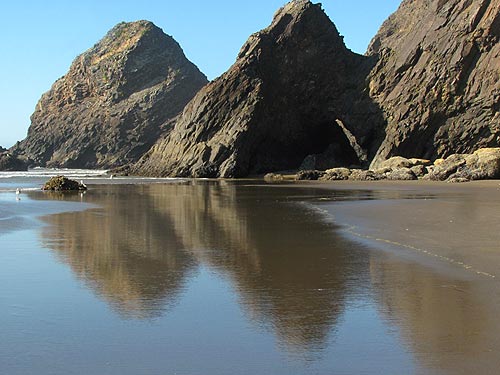
Arch Cape
In many cases, as at Arch Cape near Cannon Beach, all of a sudden tides were continually so low you could easily walk around the point that's normally covered in swirling, angry waves and get to a clandestine beach where an arch made of basalt sits – the one that got Arch Cape its name.
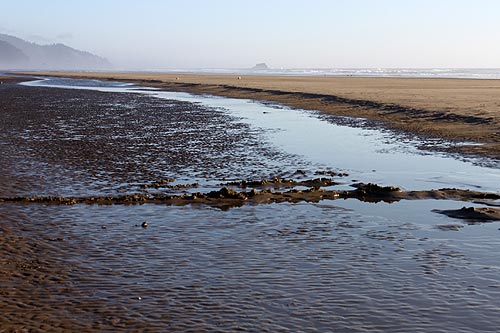
Sandbar-like conditions at Arcadia Beach in 2011
A good example of how and why this was happening was the scene just south of Cannon Beach at Arcadia State Park. Here, you could actually see a sand bar – a rise in the sand a ways before the tideline. This kind of piling up of sand was happening all over the Oregon coast, just a ways into the waterline, causing a constant sandbar that kept the tides at bay. But even more importantly, sand levels across the coast had risen so much that the land was literally higher, keeping the water further back.
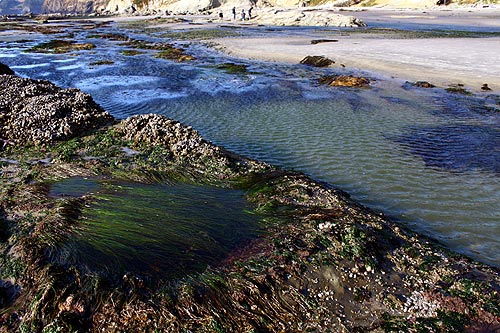
Another stunning example of this was the Devil's Punchbowl near Depoe Bay, where these sand levels made it look like sand levels were incredibly low. Because the ocean was being kept so far back, a huge expanse of bedrock was suddenly wide open and explorable. This is the kind of scene that usually happens when the sand gets so low that bedrock is exposed.
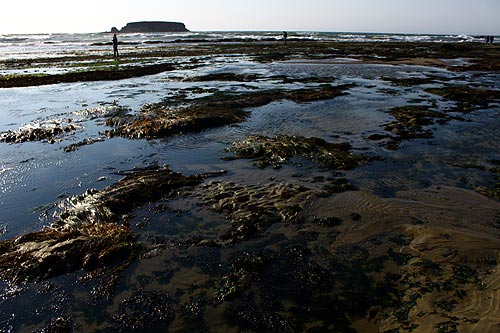
But the big giveaway here was the massive carpet of tide pool life that covered these rocks – only possible if the ocean covered it most of the time. If it was simply sand that was brushed away the bedrock would've been clear and clean of any sea life.
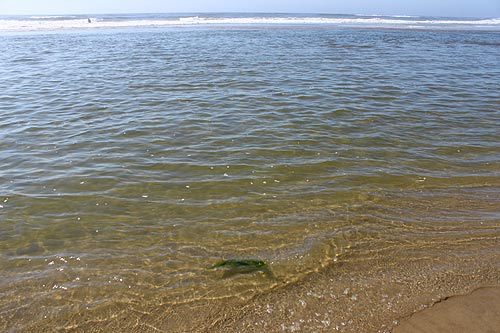
Also striking was this sandbar situation Beachside State Park, between Waldport and Yachats. It created a strange duel tide line: the waves came in at one point, but you could wade through this water to another rise in sand, where the actual breakers were coming in, about 50 feet down. Oregon Coast Hotels for this - Where to eat - Maps - Virtual Tours
Cannon Beach Lodging
Nehalem Bay Lodgings
Manzanita Hotels, Lodging
Three Capes Lodging
Pacific City Hotels, Lodging
Lincoln City Lodging
Depoe Bay Lodging
Newport Lodging
Waldport Lodging
Yachats Lodging
Oregon Coast Vacation Rentals
Oregon Coast Lodging Specials
More About Oregon Coast hotels, lodging.....
More About Oregon Coast Restaurants, Dining.....
LATEST Related Oregon Coast Articles
One was a rare orca find; both suspected human interaction. Marine sciences
N. Oregon Coast's 'Cheese War' a Quiet Part of Tillamook-Area History: See th...
History talk in Nehalem on April 26 about Tillamook battles. Manzanita events, Cannon Beach events, Tillamook events
Lyrid Meteors with a Possible Side of Aurora for Washington, Oregon, Coastlines
Lyrids peak on Monday, northern lights possible northern Washington. Weather
Road Work Coming to North Oregon Coast's Gearhart and One of World's Largest ...
Lane closures this summer on the bridge; major work in Gearhart next year. Washington coast
Be Jeweled Returns to Central Oregon Coast, Newport's Dazzling, Arty Jewelry ...
Saturday, May 10, from 10 AM to 4 PM featuring more than 2,000 pieces. Newport events
N. Oregon Coast Bridge Work During Travel Season: Some Traffic Delays on Asto...
Occasional one-lane traffic from June through September at Astoria / Ilwaco. Washington coast
Cape Kiwanda's Colossal Sand Dune: Wild Oregon Coast Rides and How It's Changing
A mix of crazy recreation with science of a crumbling landmark. Sciences, Pacific City, Oceanside
Oregon Coast, Valley and Likely Washington Coast to Get Some Aurora Borealis ...
Likely just before dawn best hour but peak happens during daylight. Weather
Back to Oregon Coast
Contact Advertise on BeachConnection.net
All Content, unless otherwise attributed, copyright BeachConnection.net Unauthorized use or publication is not permitted













































